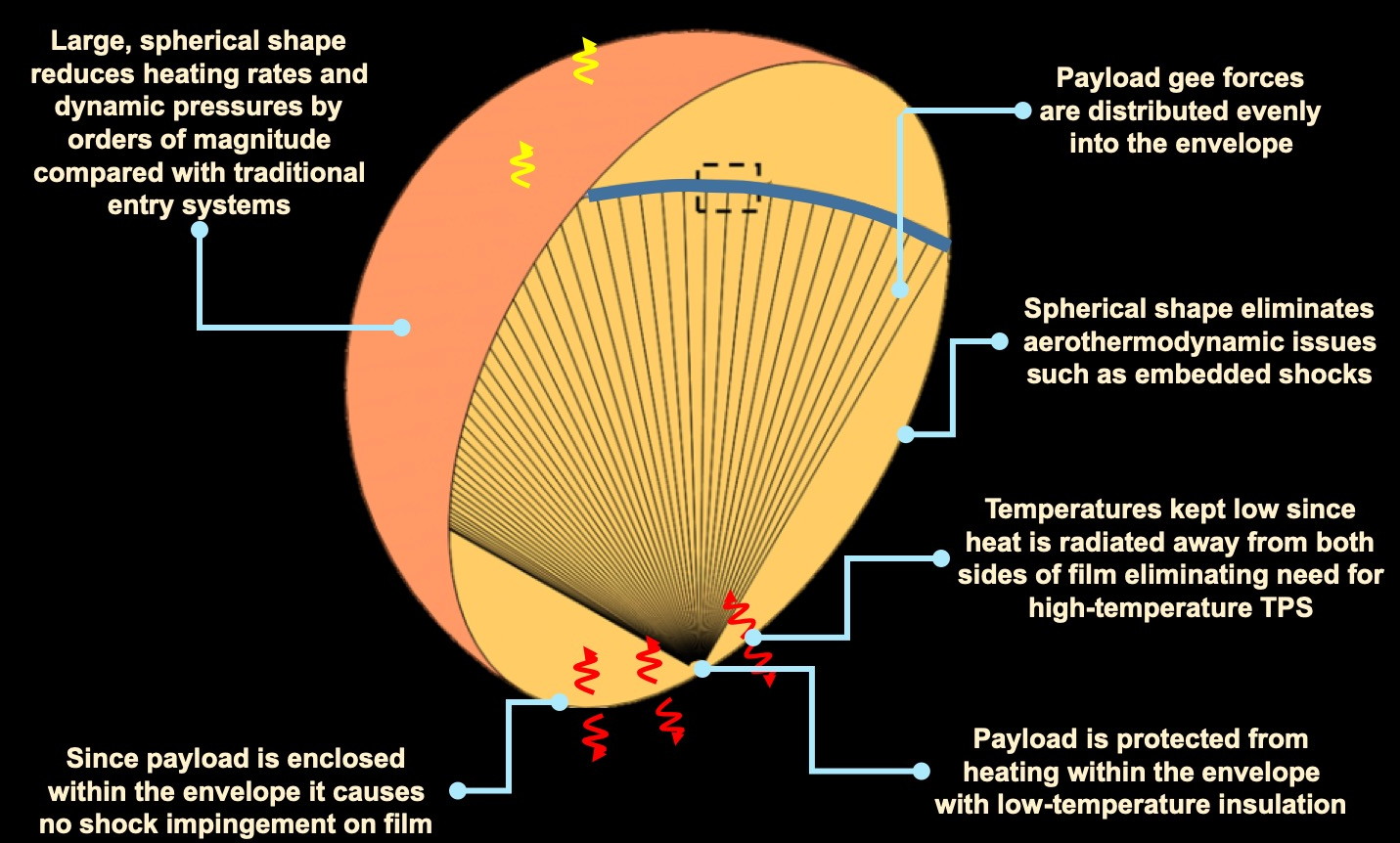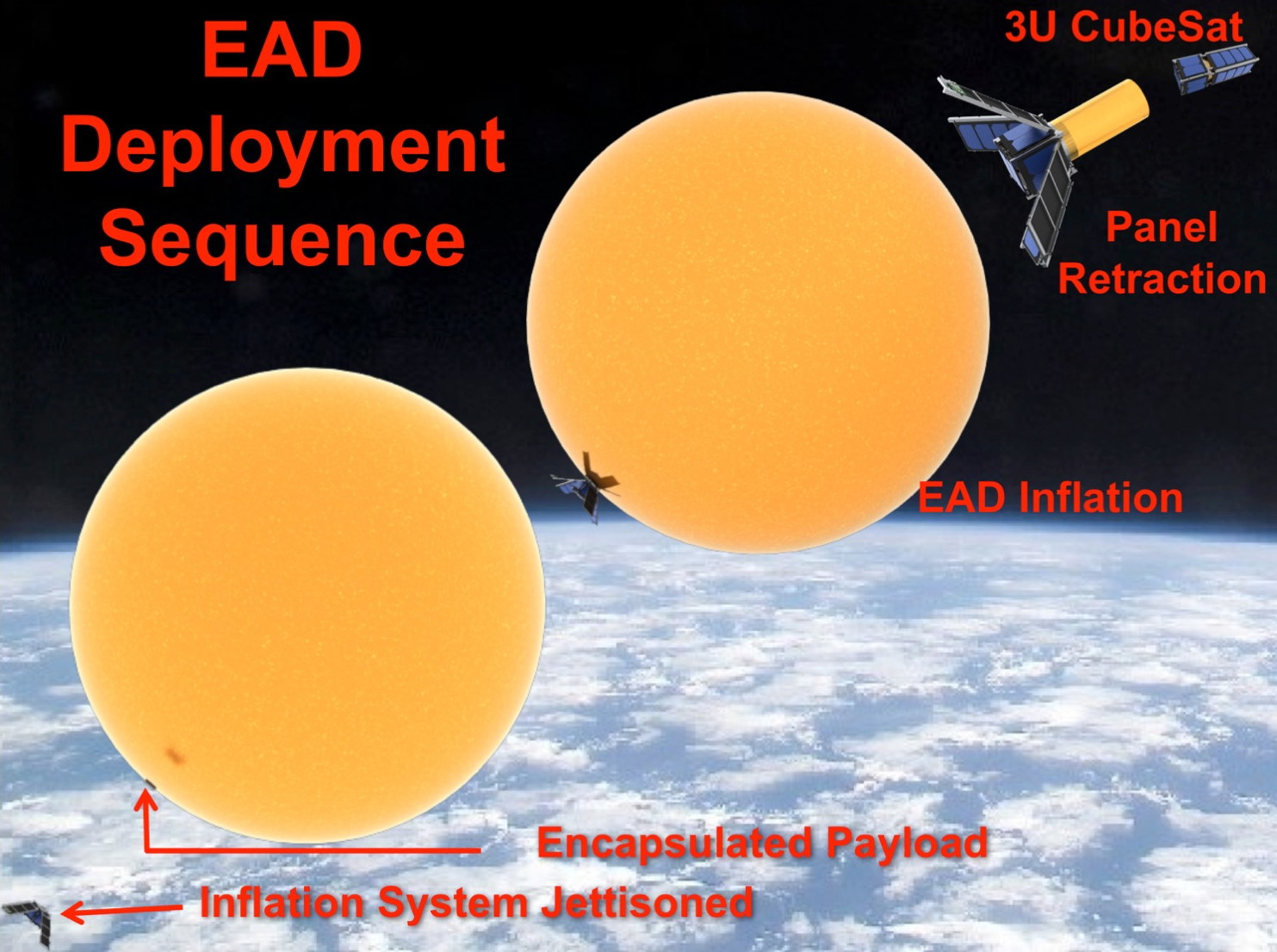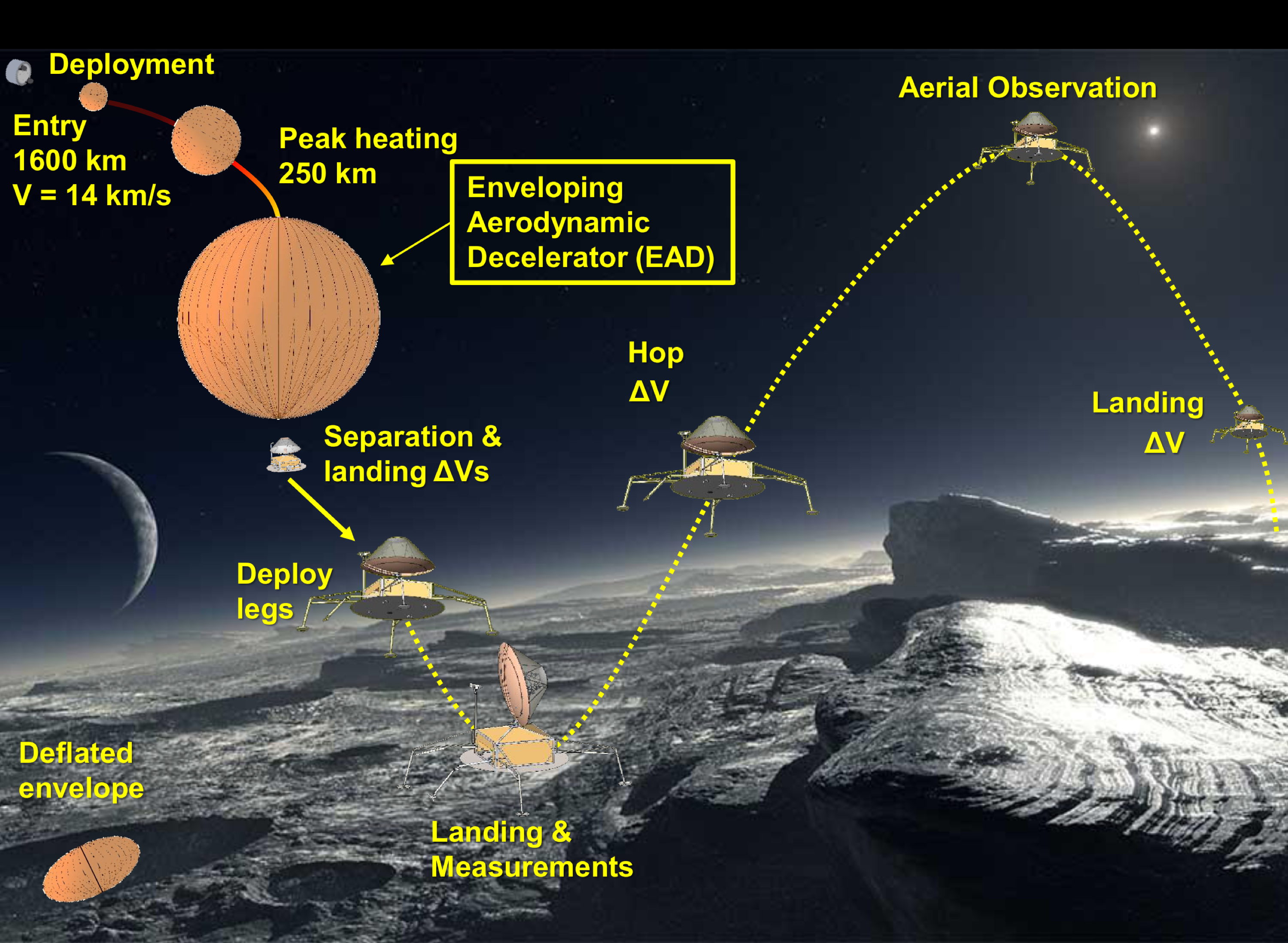Enveloping Aerodynamic Decelerator (EAD) Technology
An Enveloping Aerodynamic Decelerator (EAD) is an inflatable atmospheric brake. EAD technology was patented (US 9,884,693) by Global Aerospace Corporation as the result of NASA supported work on a small Earth reentry probe design study. EAD technology was recently extended to a Pluto lander mission for NASA’s Innovative Advanced Concepts (NIAC) Program.
The EAD innovation enables missions due to its low overall entry density and unique aerothermodynamic characteristics. The EAD employs an inflatable thin film envelope that can be made very large creating a sizeable cross-section area while remaining lightweight, resulting in an ultra-low ballistic coefficient that reduces entry heating rates and dynamic pressures by orders of magnitude compared with current entry technology. Due to its size, heating rates can be 2-3 orders of magnitude smaller for EAD than small rigid entry capsules. Entry heating is radiated away from both sides of the envelope to keep it cool eliminating the need for heavy thermal protection systems (TPS) and enabling the use of commercially available films such as polyimides.
Aerothermodynamic phenomena are challenging for current flexible and inflatable entry technology, whereas EAD provides an aerothermodynamic solution by encapsulating the payload within the envelope at its windward end, creating a uniform and stable spherical surface that eliminates shock impingement, and its heating, and keeps film and payload heating rates low in the harsh entry environment.
Analysis indicates that EAD technology is scalable in package size and weight from a few ounces, like a CubeSat reentry probe, to several hundred-pound payloads. In addition, this decelerator technology is easily transferrable to Entry, Deceleration and Landing (EDL) and aerocapture into orbit at other planetary bodies with both significant and tenuous atmospheres, including Earth, Mars, Venus, Titan, Triton, and Pluto.

Small Probe Reentry System
Small satellite missions are an increasing segment of space operations for astrobiology experiments; low-cost, in-space satellite component technology testing; orbital science constellations; and commercial applications. One reason for this growth is that the access to space for small satellites has increased and is expanding as commercial companies develop small, low-cost launchers. This expansion of small satellite activities has resulted in interest in self-contained small satellite sample return missions that could be enabled by an EAD.
Global Aerospace Corporation (GAC) has developed concepts for a Small Probe Reentry System (SPRS) for low Earth orbit (LEO) sample return missions. This technology could be used for astrobiology experiments, material space exposure investigations, large (TeraByte) data return from high-bandwidth sensors and technology demonstrations. The SPRS protects a probe from the harsh atmospheric reentry environment and slows it down so that it can land without damage to its payload. This technology will be applicable to very small satellites, like CubeSats, that could carry small sample return payloads.

Pluto Hop, Skip, and Jump Lander Mission
The Pluto Hop, Skip and Jump lander mission concept is enabled by the use of ultra-lightweight, Enveloping Aerodynamic Decelerator (EAD) technology. The combined cruise, entry and lander, dubbed an Entrycraft, integrates the decelerator system with the lander or orbiter payload that also performs all the needed function during the cruise to Pluto without a separate stage.
How can one land on or orbit Pluto in a reasonable mission time without many hundreds of millions of dollars in nuclear power sources for low-thrust propulsion, or an exotic propulsion system that could take decades and many millions of dollars to develop, or a next-generation launch vehicle and a massive chemical propulsion system? Also, can a Pluto mission be accomplished under the aegis of a NASA New Frontiers Program?
An answer to these questions is to launch a small probe on an interplanetary trajectory similar to the New Horizons mission; deploy and inflate a large, lightweight decelerator, like the EAD, on approach to Pluto for entry and descent; use Pluto’s thin extended atmosphere to reduce vehicle speed at the surface to about 120 m/s; and separate the lander from its decelerator before settling propulsively on the surface.
A roughly 330-kg, 70-meter diameter envelope and its load supporting elements can deliver a 200-kg probe to the Pluto surface or into orbit. For perspective, the envelope is smaller in diameter than the multi-ton scientific balloons NASA currently flies.
